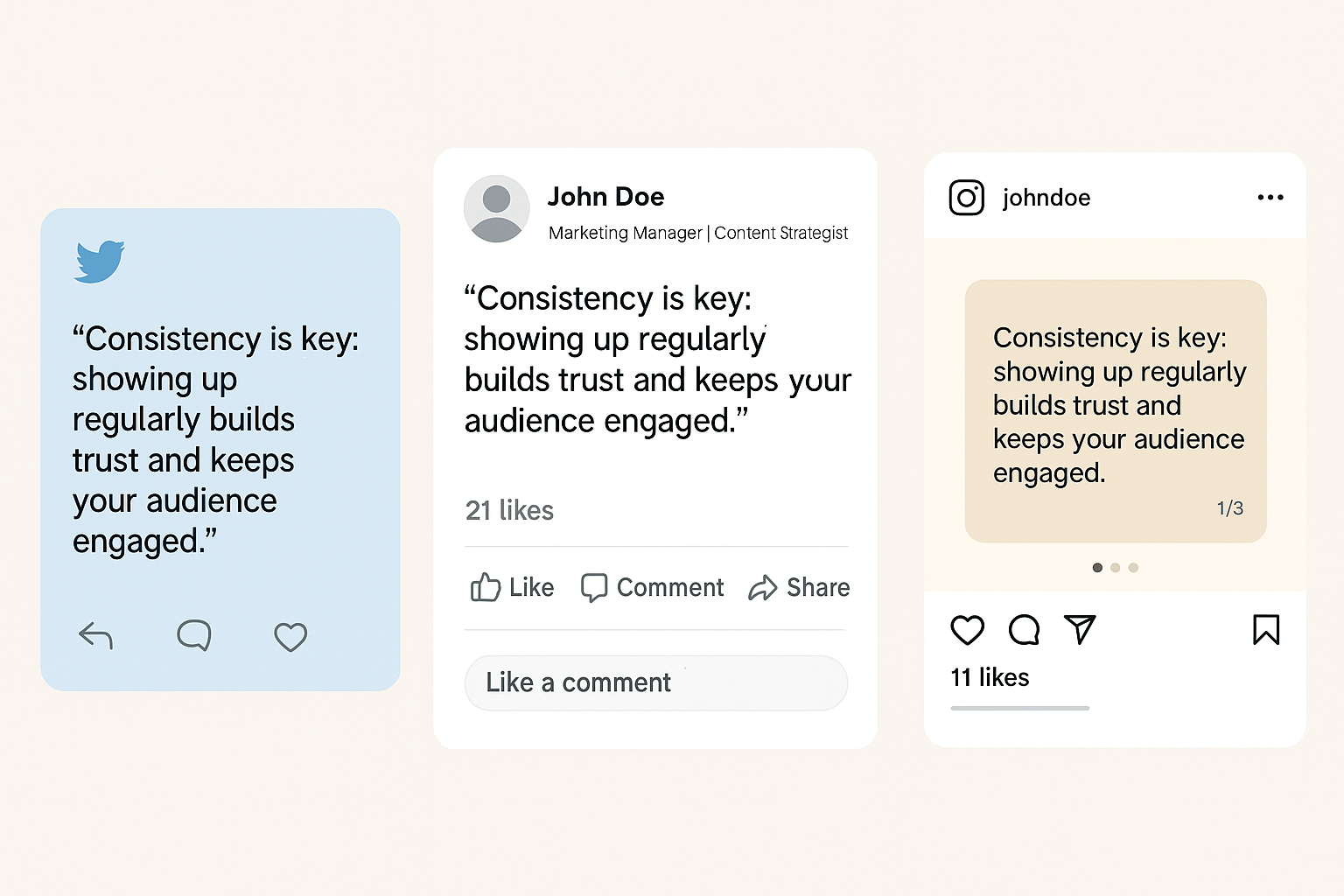Step by Step Tactic for Repurposing Your Content

How to repurpose your content and get more from every post
Every piece of content is an investment. Creating high quality content takes time, effort, and resources, so why let it fade after one use? We should stop thinking of content as a one and done effort and start treating it as a resource that can be expanded, adapted, and improved across platforms.
What if I told you that you can make one piece of content work harder for you?
Content repurposing helps you turn one idea into multiple pieces of content. A well-crafted blog post can become a LinkedIn post, a Twitter thread, or even an interactive webinar. Instead of creating something new every time, repurposing lets you get more from what you already have, which will help save time and increase your reach.
Take Hubspot for example. They don’t just publish a blog post and stop there. They extract insights, create infographics, and turn content into reels, all of these from one original piece.
In this guide, we’ll walk you through a step by step strategy to turn a single piece of content into an entire ecosystem of valuable assets, ensuring your message reaches a broader audience and remains relevant for long.

Step 1: Choosing the Right Content
Not all content can be said to be worth repurposing. Certain ones, for instance, can be time sensitive, too old fashioned, or fail to provide significant value beyond their original format.
The best content to repurpose includes:
Evergreen content
These are topics that are timeless, valuable, and remain relevant over time. They don’t have an expiration date, and they continue to attract and engage audiences. For example, “The ultimate checklist for launching a startup” is a topic that will always be useful because it provides a comprehensive checklist for founders to follow.
In depth content
Includes guides, research reports, webinars, and content like these that contain a lot of information, data, and practical advice, which means they can be broken down into smaller pieces. For example, a guide can be repurposed into a blog post, social media post, and email newsletter.
High engagement content
Posts, videos, articles, or any other form of content that has performed well in the past. The odds of it doing great in other formats are high. Google Analytics can help by giving more information on well-performing content. You should not only study likes, comments, and shares, but also take into consideration clicks and shares.

Step 2: Tailor for Each Platform
A piece of content can be consumed by an audience in different ways. While some people enjoy reading, some enjoy watching. Content should be modified in a smart way so that it reaches more audiences without having to put in more work than necessary.
Also keep in mind that each platform has a unique format, language, and audience expectations. Content has to be tailored to fit each platform, based on how people consume information on each channel for maximum engagement.
| Platform | Best Fit Content Ideas |
|---|---|
| Story driven posts | |
| Twitter or X | Short takeaways in threads or single tweets |
| Instagram, TikTok | Visual storytelling, short form videos |
| YouTube | In depth tutorials, explainer videos |
Example
A startup, after publishing a guide on “How To Keep Customers Coming Back,” repurposed the guide instead of letting it remain on their website. They:
- Extracted key takeaways to create a LinkedIn post
- Summarized insights into a Twitter or X thread
- Created short video clips for YouTube Shorts, TikTok, or Instagram Reels
This single guide post was expanded to become three new pieces of content, reaching different audiences with just a little extra work.
Another example
A skincare company posted a blog post titled “How We Sold Out Our First Product in 30 Days.” Instead of just sharing the blog link, they:
- Created a LinkedIn post about the biggest challenge they faced
- Wrote a Twitter thread breaking down their strategy
- Designed an Instagram carousel with step by step explanations
Same core content, but tailored to be unique to each platform.
Step 3: Refresh and Update Older Content
Your old content has great value. However, it can become outdated with time. Instead of drafting a new piece, you can create fresh content from what you already have.
Ways to update content:
- Add fresh ideas, including new insights or statistics
- Improve visuals, create new images or infographics
- Use recent examples, replace outdated case studies
- Leverage feedback, adjust based on audience responses or recent changes
Example
A Neil Patel original blog post on “SEO Plugins for WordPress,” published in 2017, was updated in 2025 with:
- New Google algorithm updates
- A fresh case study showing real world results
- A reel highlighting the new best practices
Neil Patel’s team updates old blog posts every quarter with new data and case studies. This tactic alone has helped him maintain consistent SEO ranking and engagement, and it extends the life of the content while keeping it relevant.

Step 4: Distribute for Maximum Visibility
Repurposing is only effective if people see the content. Once you’ve created new content formats, share them strategically to make sure they reach the right audience.
Ways to distribute repurposed content:
- Share on multiple platforms, if it works on Instagram, it might also work on TikTok
- Email, send a recap to your newsletter subscribers
- SEO optimization, update keywords in blog posts to help them rank better in search results
Step 5: Tracking and Optimization

Not all repurposed content will do well, and that’s okay. The goal is to test, learn, and adjust, as the best repurposing strategies are data driven. Use analytics to track what’s working and refine your approach.
Things to monitor:
- Engagement, which format got the most likes, shares, or comments
- Referral traffic using Google Analytics
- Conversion rates, did any piece lead to sales
Key Benefits of Repurposing Content
Reach new audiences
Not everyone consumes content the same way or uses the same platform. While some people prefer to read blogs, others are more interested in short form videos or infographics. Repurposing helps you modify content for various formats, making it appeal to a wider audience and maintaining the relevance of your brand.
Save time and effort
It takes time to generate great content. Repurposing helps you make the most of already existing content and guarantees ongoing engagement without having to start from scratch every time.
Extend shelf life
It helps to continuously increase the value of already existing content without constantly having to create new content. The lifespan of older content is extended and stays useful.
Share the same message in different formats
Repeating the same thing over and over in different ways can help boost how your audience receives the message without boring them.

Work Smarter, Not Harder with Content Repurposing
Content repurposing isn’t just about recycling old content. It is about amplifying the best ideas. Instead of struggling to create new content daily, start maximizing what you already have by following these steps:
- Pick one high performing piece of content
- Identify three to five new formats to adapt it into
- Plan a distribution strategy over the next two weeks
Make this a habit and you will get more reach, and improve engagement from every piece of content you create, without extra effort.


